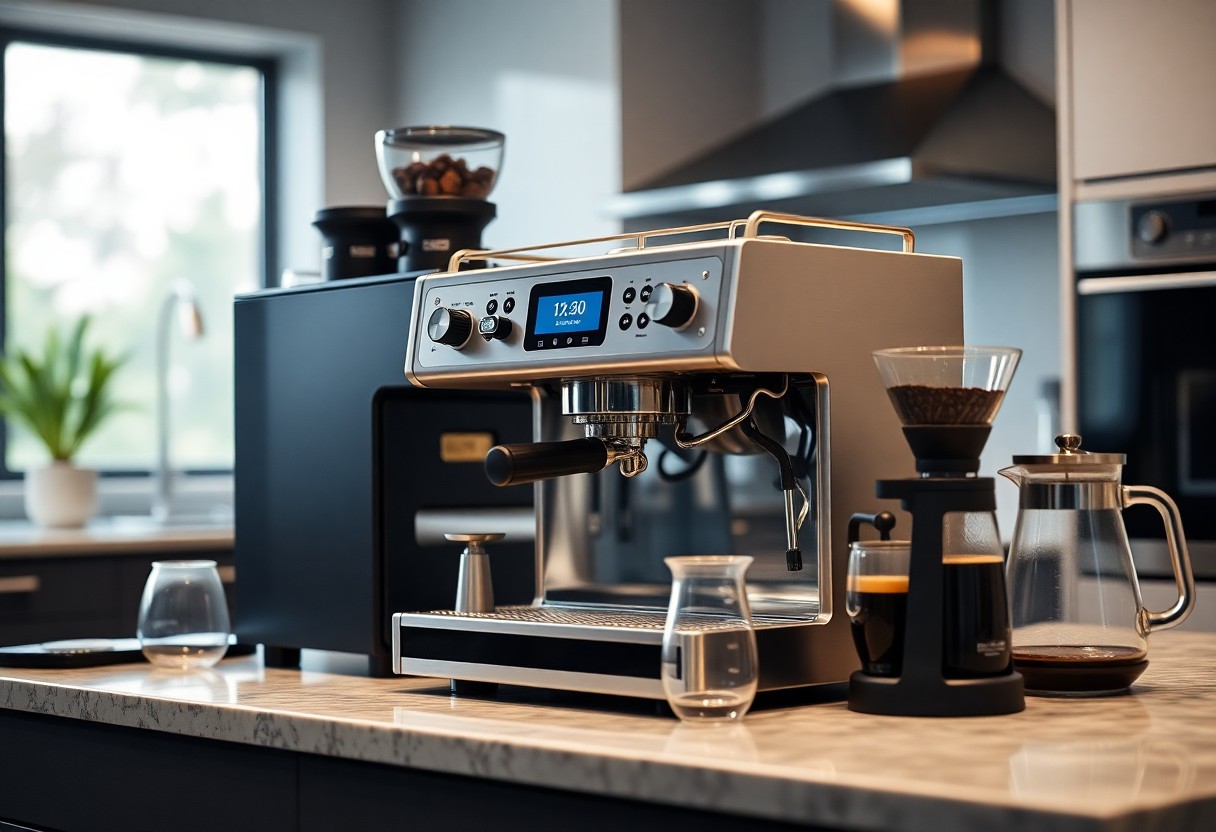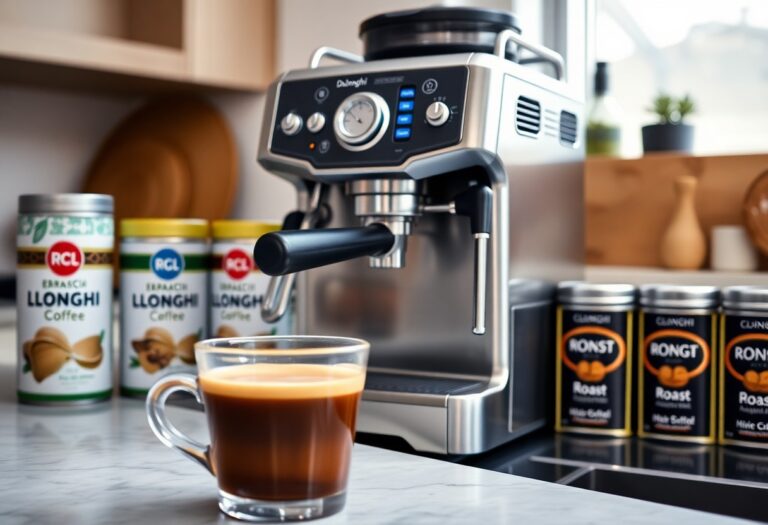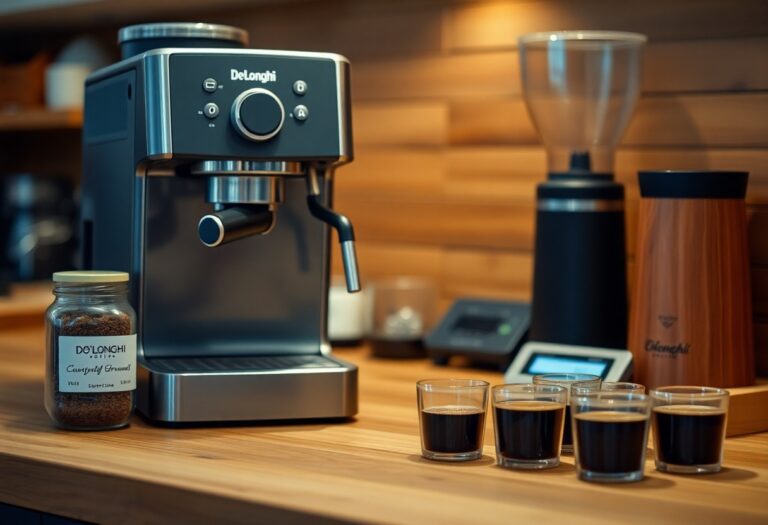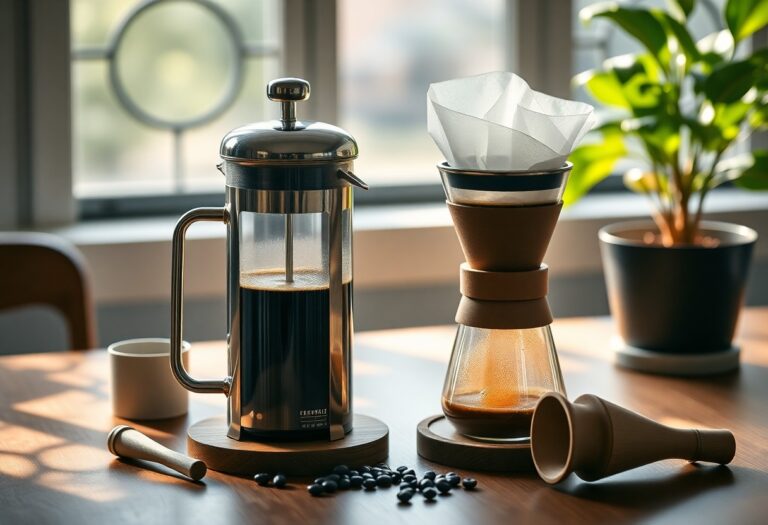What is a Barista Coffee Machine – Professional Home Models
Machine technology has advanced significantly in the coffee world, allowing you to brew café-quality drinks from the comfort of your home. A barista coffee machine combines precision and versatility, enabling you to master various brewing techniques and create delicious espresso, cappuccinos, and lattes just like a professional. Investing in a professional home model means you can control every aspect of your coffee-making process, ensuring a rich flavor profile that suits your taste preferences. In this post, we’ll explore the features of these machines and why they’re an ideal choice for coffee enthusiasts.
Key Takeaways:
- Barista coffee machines are designed to mimic the functionality of commercial espresso machines, tailored for home use.
- These machines often feature advanced brewing technologies, allowing for precise control over temperature, pressure, and extraction time.
- Many professional home models come with integrated grinders, providing freshly ground coffee for an enhanced flavor experience.
- Customization options, such as steam wands for frothing milk, make it possible to create café-quality beverages at home.
- Investing in a quality barista coffee machine can elevate your home brewing experience, offering both performance and versatility.
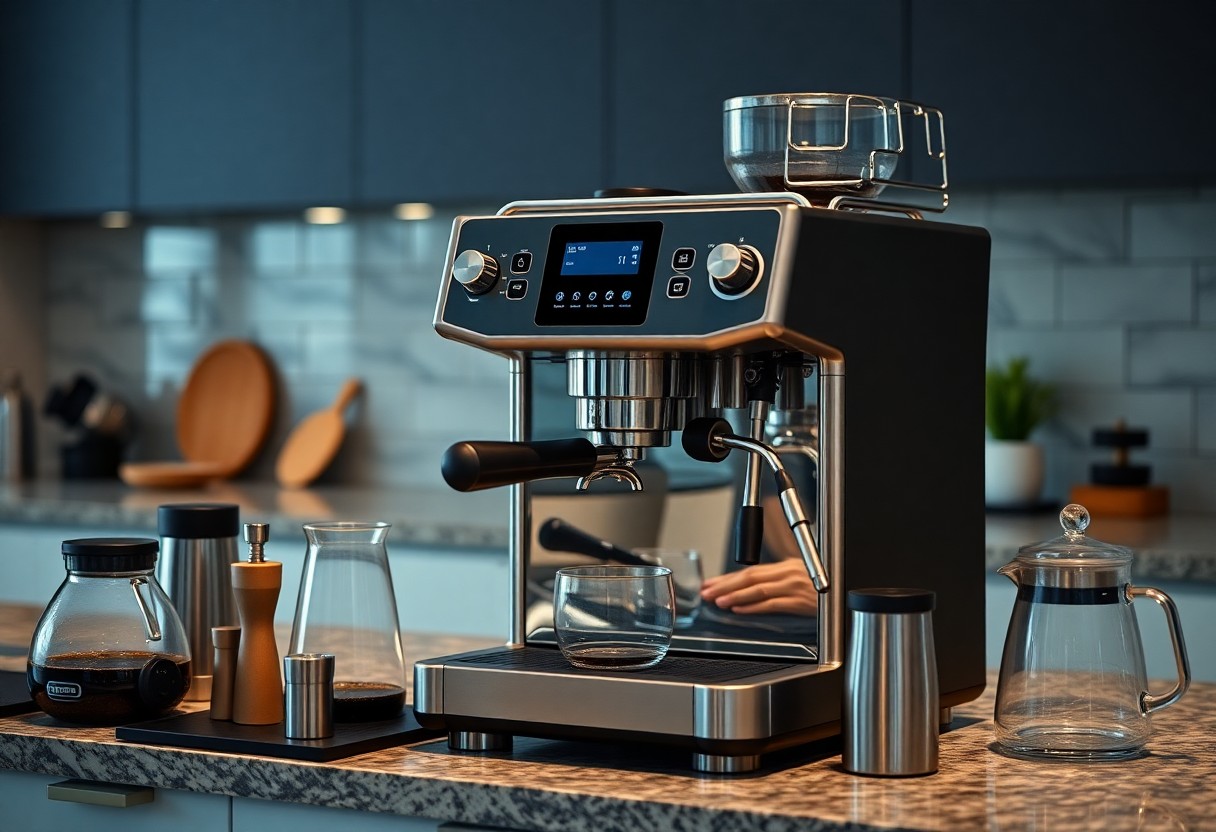
Craftsmanship and Technology: The Perfect Blend
The convergence of craftsmanship and technology is what sets a barista coffee machine apart. Each unit is a finely-tuned piece of equipment that reflects both the skill of engineers and the artistry of baristas. Innovations in design and components, along with the use of durable materials, ensure that every cup brewed meets your coffee standards, providing an experience akin to that of a café right in your kitchen.
The Art of Espresso Extraction
Espresso extraction is where the magic happens; achieving the perfect shot requires precision in water temperature, pressure, and brew time. Your barista machine uses advanced technology to control these variables, allowing you to replicate café-quality espresso with every brew. This mastery can lead to rich, flavorful shots crowned with a velvety crema that enhances your coffee experience.
Understanding Grinder Types and Their Impact
Your choice of grinder significantly influences the quality of your grind and, subsequently, your coffee’s final flavor. Burr grinders offer consistent particle size, necessary for optimal extraction, while blade grinders can produce uneven results. Investing in a quality grinder that suits your brewing method will ensure a flavorful cup that captures the essence of your preferred beans.
| Grinder Type | Characteristics |
|---|---|
| Burr Grinder | Consistent particle size, ideal for espresso |
| Blade Grinder | Inconsistent size, risk of over or under-extraction |
| Manual Grinder | Portable, no electricity needed, hands-on |
| Electric Grinder | Speedy, with various settings for brewing methods |
| Conical Burr | Uniform grind, reduces heat retention |
The type of grinder you choose will directly affect your barista experience at home. For example, a conical burr grinder provides a more uniform grind size, leading to better extraction and flavor, while a blade grinder might leave particles uneven, which could negatively impact your coffee’s taste. You should consider the grind size required for your preferred brewing method; a fine grind is optimal for espresso, whereas a coarser grind suits methods like French press. The choice of a grinder not only enhances your flavor experience but ultimately transforms your home brewing sessions into gourmet moments.
- Grinder Types play a key role in your coffee.
- Precision ensures proper extraction and flavor.
- Uniform grind size contributes to overall taste.
- Manual vs Electric offers different brewing experiences.
- The experience significantly elevates your home coffee game.
Features that Elevate Home Brewing
High-end barista coffee machines come packed with features that significantly enhance your home brewing experience. From precise temperature control to adjustable brew pressures, these machines empower you to craft café-quality drinks tailored to your palate. Additional functionalities like programmable settings and custom extraction rates ensure that every cup is uniquely yours. Explore a range of Home Espresso Machines that suit your preferences and style, taking your coffee game to the next level.
Milk Frothers and Steam Wands: A Barista’s Best Friends
Every excellent espresso is complemented by rich, creamy frothed milk, and barista coffee machines are equipped with top-notch milk frothers and steam wands designed to deliver just that. Whether you prefer a delicate microfoam for latte art or a thicker froth for cappuccinos, having a reliable steam wand allows you to experiment and achieve your desired texture with ease.
Smart Technology Integration for Consistent Brews
The integration of smart technology sets modern barista machines apart, ensuring consistency and quality in your brews. Features like connected apps enable you to customize recipes, save your preferences, and even schedule brewing times. With sensors that monitor water temperature and pressure, you can achieve precise extraction for every cup.
This technology elevates your brewing experience by removing the guesswork and allowing for repeatable results every time. For instance, some machines can connect to Wi-Fi and offer guided brewing tutorials, making it easy for you to hone your skills and impress friends with your barista-level beverages. Overall, smart technology not only enhances convenience but also plays a pivotal role in improving the quality of your coffee experience at home.
Investment Analysis: Cost vs. Value
Evaluating the cost versus value of a barista coffee machine involves looking beyond the initial purchase price. While you might spend more upfront on a professional model, the return on investment can be significant through enhanced coffee quality and durability. These machines can withstand daily use, allowing you to enjoy café-quality beverages at home for years to come.
Understanding the Price Range of Professional Home Models
Professional home barista coffee machines typically range from $500 to $5,000, depending on the brand and features. Affordable entry-level models offer crucial functions, while high-end machines include advanced options like pressure profiling and dual boilers. Depending on your budget and coffee preferences, you can find a model that fits your brewing needs without breaking the bank.
Longevity and Maintenance Cost Considerations
Investing in a professional home barista machine pays off through its longevity and low maintenance costs. Quality machines tend to last for over ten years with proper care, translating to a lower cost per cup compared to cheaper models that may need frequent replacements.
Regular maintenance significantly contributes to extending the life of your coffee machine. You can expect to spend around $100 to $200 per year on crucial upkeep, like descaling and routine cleaning. High-quality parts ensure less frequent repairs and replacements, while many brands offer extended warranties and support programs, further enhancing your investment. A well-maintained professional machine not only brews exquisite coffee but also adds value to your home setup, saving you money in the long run.
Comparing Models: What Sets Them Apart
| Feature | Model A vs. Model B |
|---|---|
| Price Point | Model A is budget-friendly at $500, while Model B offers advanced functionality at $1,200. |
| Control Options | Model A has simple manual controls; Model B boasts digital precision for custom settings. |
| Milk Frothing | Model A has a steam wand; Model B features automatic frothing for consistency. |
| Size & Portability | Model A is compact and lightweight, while Model B is bulkier, designed for permanent placement. |
Key Players in the Professional Home Barista Market
Leading brands such as Breville, De’Longhi, and Rancilio dominate the professional home barista market. These companies focus on blending quality craftsmanship with innovative features to cater to espresso enthusiasts. Breville is known for its user-friendly interfaces and precise temperature control, while De’Longhi often excels in versatility. Rancilio stands as the go-to for those seeking commercial-grade performance in a home machine.
User Experience: Insights from Avid Coffee Enthusiasts
Avid coffee enthusiasts consistently emphasize the significance of user-friendly features and build quality in their chosen barista machines. Feedback indicates that machines offering customizable settings, such as grind size and brew time, greatly improve the coffee-making process. Users also note the value of having robust customer support and comprehensive tutorials, which help in mastering their equipment and refining their brewing techniques.
This feedback highlights varying preferences among coffee aficionados. Some value automation and ease of use, favoring models with smart technology that streamline the brewing process. Others prefer semi-automatic machines, relishing the hands-on method that allows for perfecting each cup. Advanced enthusiasts often lean toward brands that offer extensive customization capabilities, enhancing their craftsmanship. Ultimately, user experiences serve as a valuable guide to identifying the right machine that suits your coffee journey and skill level.
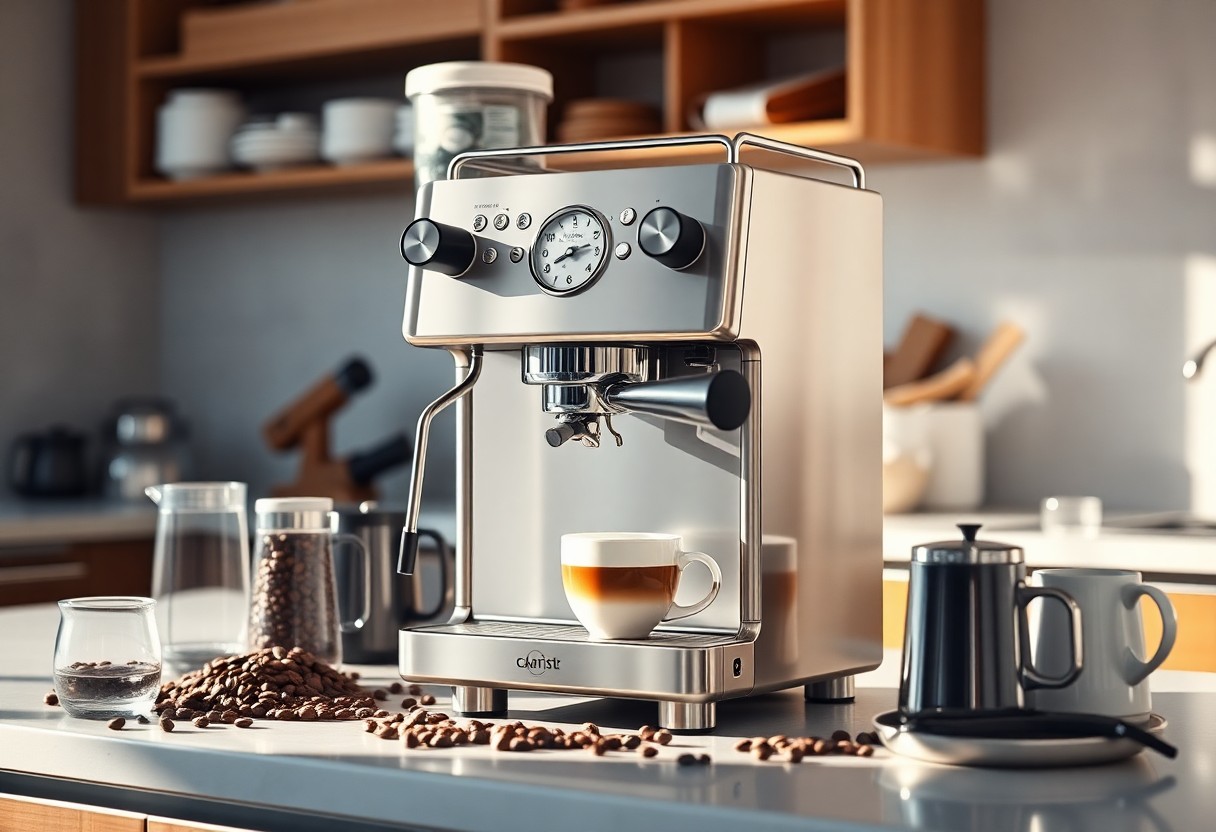
Training Your Palate: The Taste Test
Developing your palate is an exciting journey that enhances your coffee experience. By sampling various coffee beans, brew methods, and flavor profiles, you train your taste buds to identify subtle notes and quality changes. Take the time to compare single-origin coffees to blends, or savor light roasts alongside dark ones. Engaging in guided tasting sessions can reveal your preferences and help you discern the unique attributes of each cup, transforming your coffee preparation into an art form.
Experimenting with Brewing Variables
Your brewing variables—grind size, water temperature, coffee-to-water ratio, and extraction time—significantly influence the final taste of your coffee. Start adjusting one parameter at a time, documenting your findings. For example, if you prefer a bolder flavor, experiment with a coarser grind or a longer brew time. Tinkering with these factors allows you to discover the perfect balance that suits your specific tastes and deepens your understanding of coffee nuances.
Building Your Signature Coffee Profile
Crafting a signature coffee profile involves identifying the flavors and aromas that resonate most with you. This process can be exciting as you narrow down characteristics like acidity, sweetness, body, and aftertaste. Sampling various origins and roast levels aids in finding your favorites, whether it’s a fruity Ethiopian or a chocolaty Colombian. Don’t hesitate to keep a coffee journal to note your impressions as you refine your profile over time.
Building a signature coffee profile is about personal exploration. Once you’ve identified flavors you enjoy, you can start to map out various beans, roast levels, and brewing techniques that highlight those elements. Seek out specific coffee producers known for your preferred profile, or create your own blends, incorporating different beans to achieve complexity. Engaging with local roasters or coffee communities can further enrich this process and expose you to diverse perspectives on flavor pairing and brewing. Ultimately, your signature profile becomes a unique reflection of your palate, making every cup a personalized experience.
Conclusion
Presently, investing in a professional home barista coffee machine can elevate your coffee experience significantly, allowing you to craft café-quality beverages right in your kitchen. With the right machine, you can explore a range of brewing techniques and develop your skills. To find valuable insights on your options, consider checking out The Best Espresso Machine guide. With these tools, you will be well on your way to enjoying the perfect cup of coffee each time.
FAQ
Q: What is a barista coffee machine?
A: A barista coffee machine is an advanced coffee-making appliance designed to replicate the functionality of commercial espresso machines used in cafes and coffee shops. These machines often come equipped with features such as multiple brewing methods, steam wands for frothing milk, programmable settings, and high-quality components that allow users to create café-style beverages at home.
Q: What features should I look for in a professional home barista coffee machine?
A: When choosing a professional home barista coffee machine, consider features such as a reliable espresso brewing system, a powerful steam wand for frothing milk, precise temperature control, customizable settings for grind size and brew strength, and an easy-to-use interface. A built-in grinder is also a significant benefit, as it ensures freshly ground coffee for each brew.
Q: How does a barista coffee machine differ from a regular coffee maker?
A: The primary difference lies in the complexity and quality of the brewing process. A regular coffee maker typically brews drip coffee, which lacks the intensity and flavor profile of espresso. In contrast, a barista coffee machine can produce espresso, cappuccinos, lattes, and more, using high pressure and precision to extract flavors. Additionally, barista machines often have further capabilities for steaming milk and custom configurations for different beverages.
Q: Are barista coffee machines suitable for beginners?
A: While professional barista coffee machines can be complex, many brands offer user-friendly models specifically designed for beginners. These machines often come with automatic settings and intuitive controls, making it easier to produce quality coffee without extensive knowledge of espresso brewing techniques. As users become more comfortable, many machines allow for manual adjustments to further refine their coffee experience.
Q: What maintenance is required for a barista coffee machine?
A: Regular maintenance is necessary to keep a barista coffee machine functioning optimally. This includes cleaning the machine regularly to prevent build-up of coffee oils and milk residues, descaling the machine periodically to remove mineral deposits, and ensuring that the grinder is cleaned and adjusted for consistency. Users should also refer to the manufacturer’s guidelines for specific maintenance tasks and recommended cleaning products to prolong the life of the machine.

